Amir Hossein Fahim Raouf
Optimizing Energy-Harvesting Hybrid VLC/RF Networks with Random Receiver Orientation
Feb 06, 2023Abstract:In this paper, we consider an indoor hybrid visible light communication (VLC) and radio frequency (RF) communication scenario with two-hop downlink transmission. The LED carries both data and energy in the first phase, VLC, to an energy harvester relay node, which then uses the harvested energy to re-transmit the decoded information to the RF user in the second phase, RF communication. The direct current (DC) bias and the assigned time duration for VLC transmission are taken into account as design parameters. The optimization problem is formulated to maximize the data rate with the assumption of decode-and-forward relaying for fixed receiver orientation. The non-convex optimization is split into two sub-problems and solved cyclically. It optimizes the data rate by solving two sub-problems: fixing time duration for VLC link to solve DC bias and fixing DC bias to solve time duration. The effect of random receiver orientation on the data rate is also studied, and closed-form expressions for both VLC and RF data rates are derived. The optimization is solved through an exhaustive search, and the results show that a higher data rate can be achieved by solving the joint problem of DC bias and time duration compared to solely optimizing the DC bias.
Spectrum Monitoring and Analysis in Urban and Rural Environments at Different Altitudes
Jan 06, 2023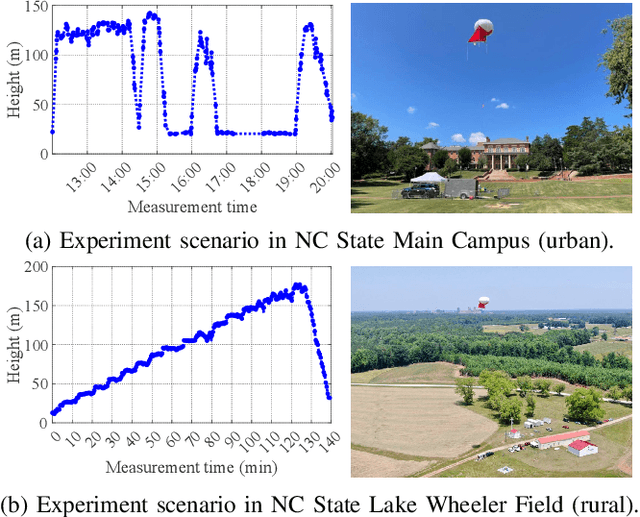
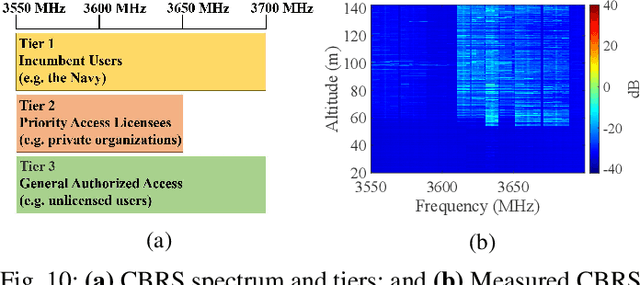
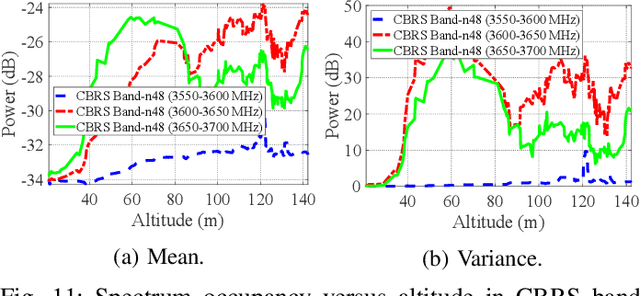
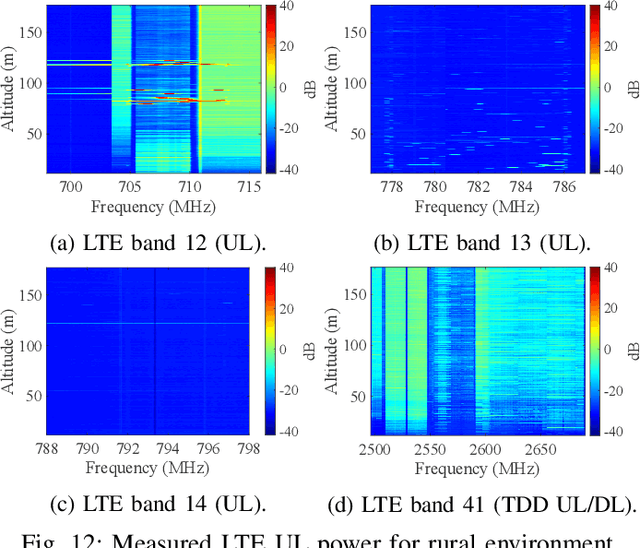
Abstract:Due to the scarcity of spectrum resources, the emergence of new technologies and ever-increasing number of wireless devices operating in the radio frequency spectrum lead to data congestion and interference. In this work, we study the effect of altitude on sub-6 GHz spectrum measurement results obtained at a Helikite flying over two distinct scenarios; i.e., urban and rural environments. Specifically, we aim at investigating the spectrum occupancy of various long-term evolution (LTE), $5^{\text{th}}$ generation (5G) and citizens broadband radio service (CBRS) bands utilized in the United States for both uplink and downlink at altitudes up to 180 meters. Our results reveal that generally the mean value of the measured power increases as the altitude increases where the line-of-sight links with nearby base stations is more available. SigMF-compliant spectrum measurement datasets used in this paper covering all the bands between 100~MHz to 6~GHz are also provided.
Performance Analysis of Quantum Key Distribution in Underwater Channels
Aug 20, 2022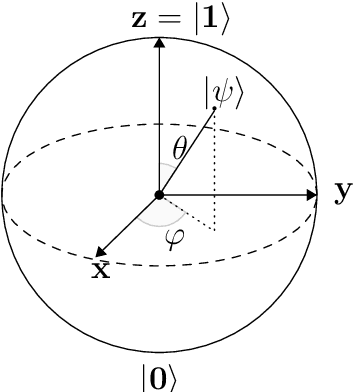

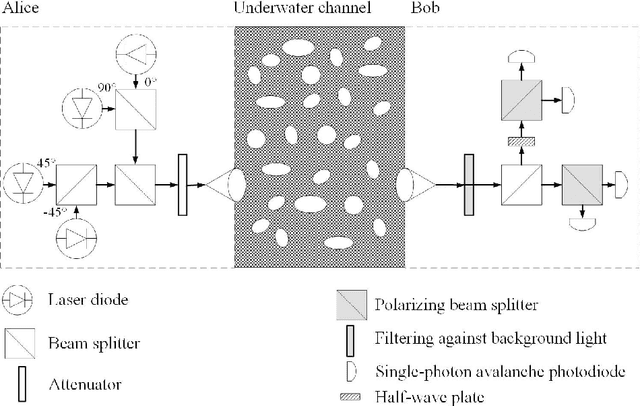
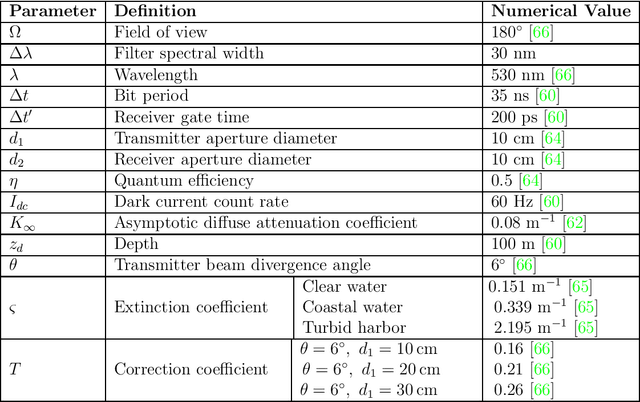
Abstract:The current literature on quantum key distribution (QKD) is mainly limited to the transmissions over fiber optic, atmospheric or satellite links and are not directly applicable to underwater environments with different channel characteristics. Absorption, scattering, and turbulence experienced in underwater channels severely limit the range of quantum communication links. In the first part of this thesis, we analyze the quantum bit error rate (QBER) and secret key rate (SKR) performance of the well-known BB84 protocol in underwater channels. As path loss model, we consider a modified version of Beer-Lambert formula which takes into account the effect of scattering. We derive a closed-form expression for the wave structure function to determine the average power transfer over turbulent underwater path and use this to obtain an upper bound on QBER as well as a lower bound on SKR. In the second part of this thesis, as a potential solution to overcome range limitations, we investigate a multi-hop underwater QKD where intermediate nodes between the source and destination nodes help the key distribution. We consider the deployment of passive relays which simply redirect the qubits to the next relay node or the receiver without any measurement. Based on the near-field analysis, we present the performance of relay-assisted QKD scheme in terms of QBER and SKR in different water types and turbulence conditions. In the last part of this thesis, we investigate the fundamental performance limits of decoy BB84 protocol over turbulent underwater channels and provide a comprehensive performance characterization. Based on near field analysis, we utilize the wave structure function to determine the average power transfer over turbulent underwater path and use this to obtain a lower bound on key generation rate. Based on this bound, we present the performance of decoy BB84 protocol in different water type.
Multi-Hop Quantum Key Distribution with Passive Relays over Underwater Turbulence Channels
Jun 13, 2022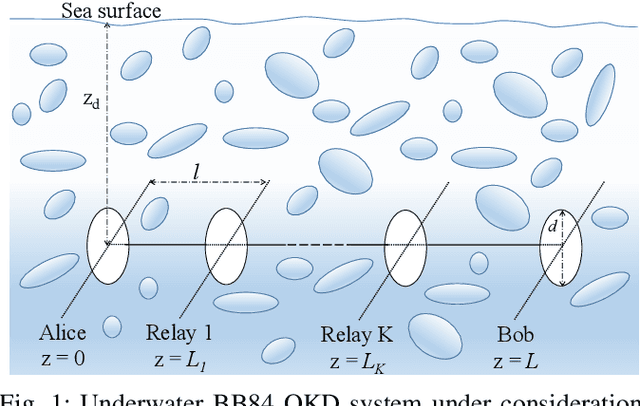
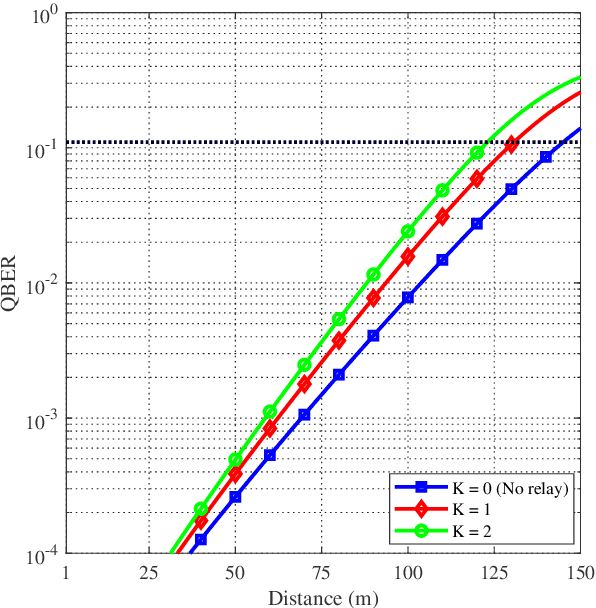
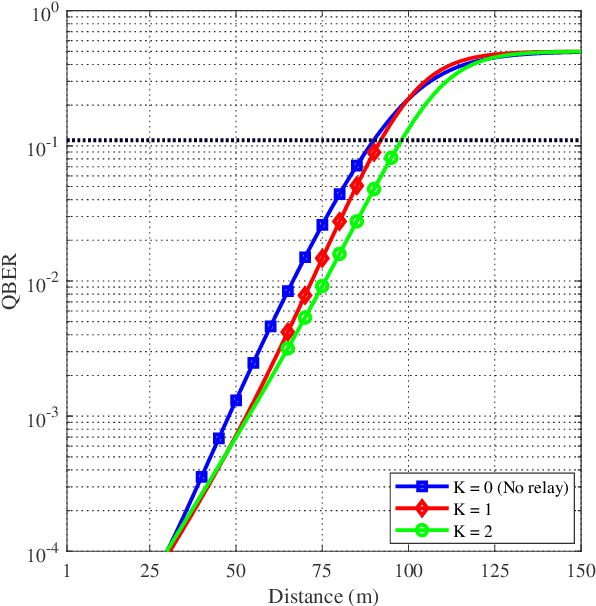
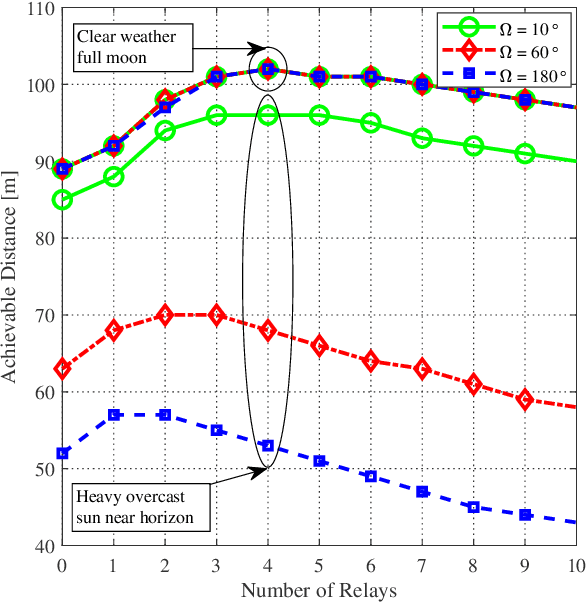
Abstract:Absorption, scattering, and turbulence experienced in underwater channels severely limit the range of quantum communications. In this paper, to overcome range limitations, we investigate a multi-hop underwater quantum key distribution (QKD) where intermediate nodes help the key distribution between the source and destination nodes. We consider deployment of passive-relays which simply redirect the qubits to the next relay node or receiver without any measurement. Based on near-field analysis, we present the performance of relay-assisted QKD scheme in clear ocean under different atmospheric conditions. We further investigate the effect of system parameters (aperture size and detector field-of-view) on the achievable distance.
Optimal Design of Energy-Harvesting Hybrid VLC-RF Networks
Jun 09, 2022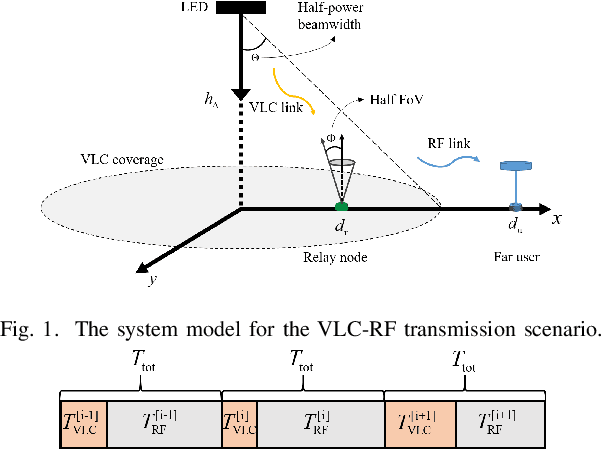
Abstract:In this extended abstract, we consider a dual-hop hybrid visible light communication (VLC)/radio frequency (RF) scenario where energy is harvested during the VLC transmission and used to power the relay. We formulate the optimization problem in the sense of maximizing the data rate under the assumption of decode-and-forward (DF) relaying. As the design parameters, the direct current (DC) bias and the assigned time duration for energy harvesting are taken into account. In particular, the joint optimization is split into two subproblems, which are then cyclically solved. Additional details and numerical results are left to be presented in the full paper.
 Add to Chrome
Add to Chrome Add to Firefox
Add to Firefox Add to Edge
Add to Edge